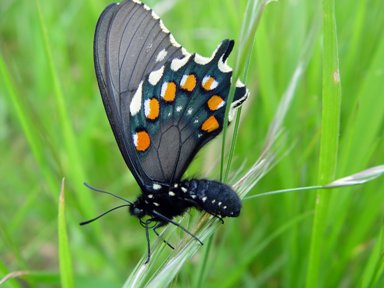Fun Facts!!
"If nothing ever changed, there'd be no butterflies" - Author Unknown
Did you know...
Wikimedia.jpg)
.jpg)
Image courtesy to Wikimedia Commons.
Image courtesy of Jeffrey Pippen.
The pictures above show the distinct chrysalis formation that Battus
philenor form. The chrysalis can be either brown or green. To learn
more about the chrysalis of Battus philenor visit the
Reproduction page.
.jpg)
Image courtesy to Wikimedia
Commons. The picture to the left shows Battus
philenor eggs on Wooly Dutchman's Pipevine (Aristolochia
tomentosa). To learn more about this host plant visit the
Nutrition page.
.jpg)
Image courtesy of Jeffrey Pippen. The image to right shows Battus philenor getting water by a process called puddling. To learn more about puddling go to the Nutrition page.
To see the references I used go to my Reference page!
.jpg)
.jpg)
